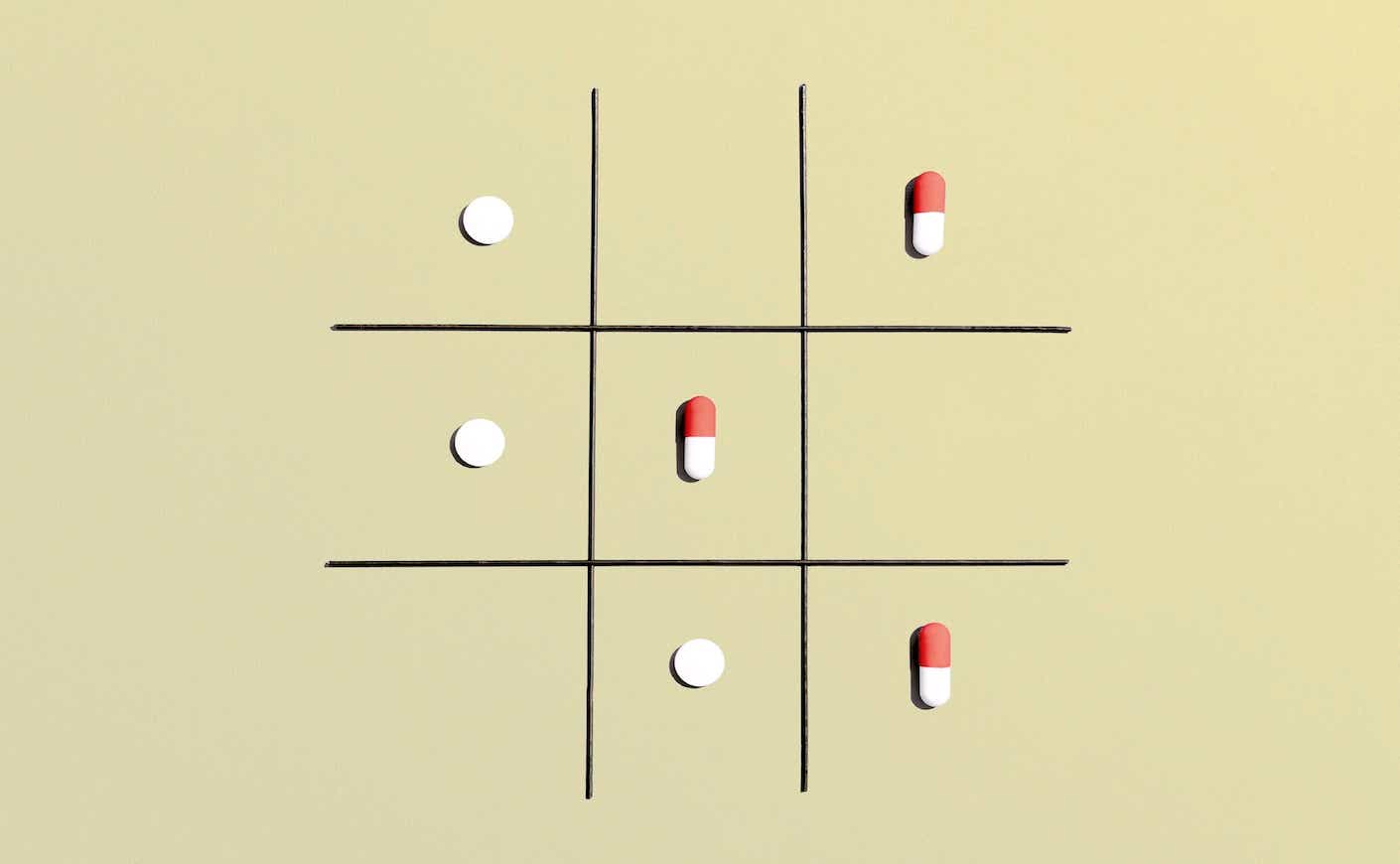This article is part of an ongoing series providing insights and tips from a primary care doctor on how to get the most from your medical appointments, what your doctor might be experiencing on the other side of the exam table, and all that patients and doctors have in common so we can make the best of our healthcare system together.
As a primary care physician, prescription medications are among the most important tools in my toolbox when treating my patients’ medical conditions. Sometimes, I may prescribe a medication for a limited period of time, like a 5-day course of antibiotics to treat a bacterial infection. Other times, the prescription may be more of a long-term solution, like glucose-lowering therapy for diabetes.
On the other side of that, knowing exactly which medications my patient already takes every day can provide me with a world of information about them. Not just which medical conditions they may have but what side effects they might experience, if there are any drugs I should avoid prescribing in the future based on drug-drug interactions, and if I need to check any lab tests to ensure a drug is working well for my patient’s body.
Prescription medications are understandably important to my patients, too. Most of my inbox messages are about prescriptions — wanting them, wanting to stop them, wondering about a dosage change, or anything in between. If you’ve got a question for your doctor about a medication, read this list of tips regarding prescriptions and your medical provider first — you may find the answer you’re looking for.
Your doctor needs an updated medication list
Perhaps one of the most helpful, important, and empowering things you can do before any doctor’s appointment is to write or type a list of exactly which medications and over-the-counter supplements you’re taking, along with the dosages and how often you take them.
This seemingly simple act will ensure your medical team has accurate information. In every patient visit, medical professionals rely on the electronic medical record (EMR), or the digital version of the patient’s medical history, to both look up and document important health information. Medications can linger in the EMR long after you’ve stopped taking them, like that cough medicine you got at urgent care two years ago or the urinary tract infection antibiotic you finished six months ago. Your list of medications you’re taking will eliminate old or outdated information in the EMR.
In addition, your doctor may not know which medications other clinicians have prescribed. Sometimes, my patients assume that I automatically get updated if their cardiologist or orthopedic surgeon prescribes something new. More often than not, I actually don’t have access to that information during our visit. Bringing a list of your current medications lets your doctor know exactly what you’re taking right now and make safer treatment decisions.
It will also save an enormous amount of time during your visit. When I ask my patients which medications they take, and they respond with a clear, up-to-date list, the visit immediately goes much more smoothly. It fills me with gratitude!
If you can’t provide a hand-written or typed list, many smartphones have health apps that allow you to create medication lists and keep them updated. Showing this list to your provider is also extremely helpful.
Your doctor doesn’t know what your pill looks like
When I ask my patients which medications they’re taking, they often tell me, “Oh, the little white pill in the morning,” or “I forget the name, but it’s yellow and looks like a triangle.” It may be surprising to learn that most clinicians aren’t able to identify medications by their appearance. We may know exactly how the medication works, what dosages it comes in, and if it has any negative drug-drug interactions with other medicines you’re taking, but most of the time, we’ve never seen what the tablet or capsule actually looks like. Even if we have, the manufacturer may change the pill’s appearance over time.
Pill Identifier resources can be helpful to both patients and healthcare workers in these situations. It’s extra valuable to consult them before your appointment and note your findings in that medication list we just talked about.
Not all prescriptions are forever
Perhaps one of the most common questions I answer when writing a new prescription is, “Will I have to take this forever?” This is an excellent question, and it’s important for both you and your clinician to understand if an off-ramp might be possible one day.
In my primary care practice, for example, I frequently prescribe medications for high blood pressure, high cholesterol, and diabetes. In many cases, a patient may need to be on these medications for the rest of their lives, depending on their other risk factors. But sometimes, if they can achieve meaningful improvements in their health through lifestyle changes such as nutrition, sleep, and physical activity, then we may be able to stop their medication one day and see how they do.
It’s always an individualized discussion, and even the logistics of stopping a medication may differ from case to case (for example, cold turkey versus a slow taper). But it can be helpful to know ahead of time that you may not need to take every new prescription for the rest of your life, so feel empowered to ask.
Your doctor doesn’t control the cost
One of the most confusing and frustrating things about our healthcare system is the lack of transparency when it comes to costs. This comes up with prescriptions all the time. Even with the same insurance coverage, a medication’s out-of-pocket cost can vary wildly from one pharmacy to another.
This is due to various factors, including the relatively complicated drug supply chain from manufacturer to distributor to pharmacy to patient; an equally complex reimbursement model involving pharmacy benefit managers; each pharmacy placing its own markups on different drugs; and insurance plans working with preferred pharmacies, which could make the same drug cheaper at the preferred pharmacy and more expensive elsewhere.
This dizzying number of players and steps in the process can be hard for you and your healthcare provider to keep track of. I often feel just as in the dark about prescription pricing as my patients feel. For all of us, GoodRx and WebMDRx are extremely helpful resources for comparing the out-of-pocket cost of a given medication at multiple local pharmacies. I use GoodRx all the time, and I encourage my patients to use it to save money on their prescriptions.
Other resources to help lower the economic burden of prescription medications are coupons (which can be found at GoodRx and on the drug manufacturer’s website), drug discount cards through your insurance plan, and state assistance programs. Medicare also offers pharmaceutical assistance programs, which you can find based on the specific prescription medications you take.
Finally, asking your clinician if a generic version of your medication is available can result in cost savings. So can finding out if your insurance plan allows a 90-day prescription rather than a 30-day prescription. Using all of these tools together can help substantially lower the financial burden of prescriptions on a monthly basis.
Doctors don’t control the stock
Recently, drug shortages have been all over the news. While there are many reasons why a particular drug may be out of stock, the bottom line is that it’s incredibly frustrating and demoralizing for patients, physicians, and pharmacists alike. Recent shortages of medications like Adderall, Ozempic, and Wegovy have led to dozens of messages per day in my inbox. Sometimes, medicines like anti-cancer treatments and antibiotics are also out of stock, leading to heartbreaking delays or gaps in care for my patients.
Unfortunately, when there’s a regional or national shortage of a medication, there’s very little clinicians can do to find it. We wait on hold with our local pharmacies just like our patients do. We hear the same “we don’t know when we’ll have XYZ medication in stock again” message from the beleaguered, overworked pharmacist.
What we can do is brainstorm other solutions with you. Depending on the medication, there may be a reasonable alternative that we can try instead. For example, when there was a prolonged shortage of Adderall in 2023, clinicians worked with patients to try medications like Vyvanse or Concerta. If my patient takes Ozempic for diabetes and can no longer find it because of the public rush on Ozempic as a weight loss tool, I will work with them to try other glucose-lowering medications. It’s not easy or convenient for anyone. But in many cases, we have other options to explore.
Two helpful websites for learning which medications are currently experiencing shortages are the American Society of Health-System Pharmacists’ database and the Food and Drug Administration list, which is constantly updated.
Neda Frayha, MD, is a primary care internist, the editor and host of the Primary Care Reviews and Perspectives podcast by Hippo Education, and a public radio contributor on topics related to health and medicine. She has written for the Washington Post, reported on health care for WHYY, and been featured on podcasts such as The Pulse, The Broad Experience, and The Curbsiders.









